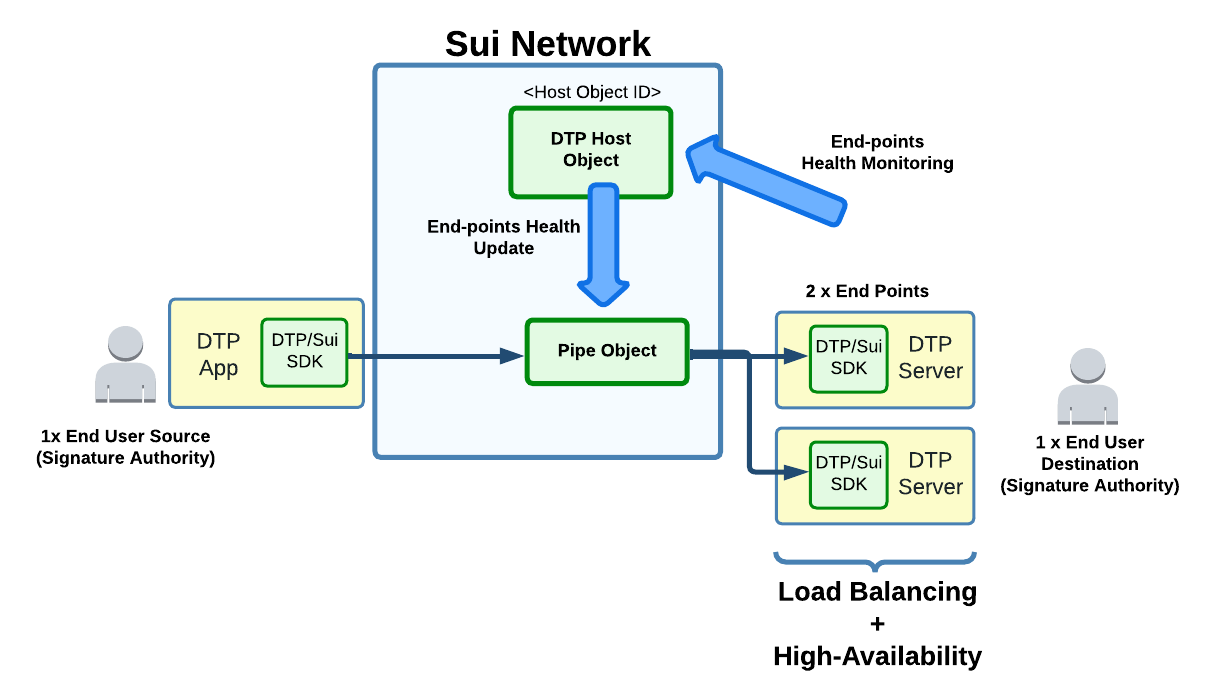Load Balancing
If not already done, read first the Architecture.
Off-Chain Single Cluster Load Balancing
A DTP Services daemon can dispatch the connections to multiple servers. This mitigate some scalability and availability issues. The DTP Services daemon remains a single point of failure though.
Note: This feature was already implemented for JSON-RPC high availability by Suibase in 2023. This will be integrated into the DTP Services daemon in 2024.
On-Chain Multi-Cluster Load Balancing
This optional feature is an enhancement to the off-chain single cluster load balancing.
It enables better availability by avoiding having a single server (point of failure) dispatch all the traffic.
This features add "worldwide" dispatching consensus and by-design works great for coordinating servers regardless of their location. It also helps mitigate "split brain" network problems (e.g. when servers in a region can't coordinate with the rest but they are still able to serve their share of DTP connections).

Unlike traditional network, the data is not physically pushed toward a server. Instead, the data remains on the network and an event is emitted about who should pull it. The who question is "best effort" answered by this on-chain logic.
It is the responsibility of the servers to subscribe to their respective event stream and normally respond only to its assigned data (this change in some recovery/retry scenario).
Configuration of the end-points and their health is managed through the DTP Host object, which in turn eventually updates all its transport control objects and pipes.
The combination of this on-chain logic and DTP Service Daemon will hide the high complexity of automatic recovery/retry logic with a different server.
Note: The complexity of load balancing is not visible to the senders. This is all configured and handled on the receiving end.
